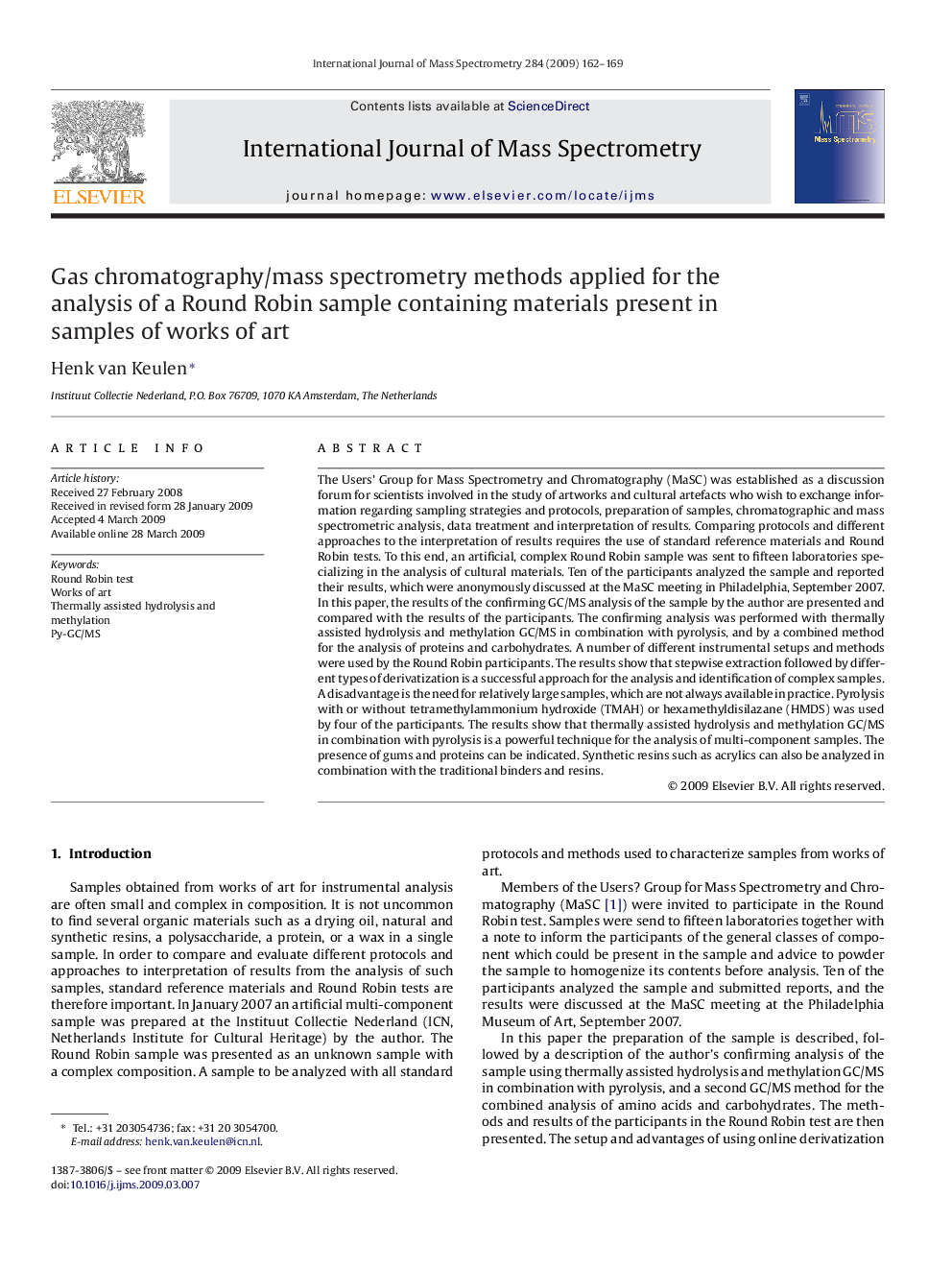| Article ID | Journal | Published Year | Pages | File Type |
|---|---|---|---|---|
| 1194092 | International Journal of Mass Spectrometry | 2009 | 8 Pages |
The Users’ Group for Mass Spectrometry and Chromatography (MaSC) was established as a discussion forum for scientists involved in the study of artworks and cultural artefacts who wish to exchange information regarding sampling strategies and protocols, preparation of samples, chromatographic and mass spectrometric analysis, data treatment and interpretation of results. Comparing protocols and different approaches to the interpretation of results requires the use of standard reference materials and Round Robin tests. To this end, an artificial, complex Round Robin sample was sent to fifteen laboratories specializing in the analysis of cultural materials. Ten of the participants analyzed the sample and reported their results, which were anonymously discussed at the MaSC meeting in Philadelphia, September 2007. In this paper, the results of the confirming GC/MS analysis of the sample by the author are presented and compared with the results of the participants. The confirming analysis was performed with thermally assisted hydrolysis and methylation GC/MS in combination with pyrolysis, and by a combined method for the analysis of proteins and carbohydrates. A number of different instrumental setups and methods were used by the Round Robin participants. The results show that stepwise extraction followed by different types of derivatization is a successful approach for the analysis and identification of complex samples. A disadvantage is the need for relatively large samples, which are not always available in practice. Pyrolysis with or without tetramethylammonium hydroxide (TMAH) or hexamethyldisilazane (HMDS) was used by four of the participants. The results show that thermally assisted hydrolysis and methylation GC/MS in combination with pyrolysis is a powerful technique for the analysis of multi-component samples. The presence of gums and proteins can be indicated. Synthetic resins such as acrylics can also be analyzed in combination with the traditional binders and resins.
Graphical abstractAn artificial, complex Round Robin sample was sent to fifteen laboratories specializing in the analysis of cultural materials. The results of the confirming GC/MS analysis of the sample by the author are presented and compared with the results of the participants. The results show that thermally assisted hydrolysis and methylation GC/MS in combination with pyrolysis is a powerful technique for the analysis of multi-component samples. The presence of gums and proteins can be indicated. Synthetic resins such as acrylics can also be analyzed in combination with the traditional binders and resins.Figure optionsDownload full-size imageDownload as PowerPoint slide
